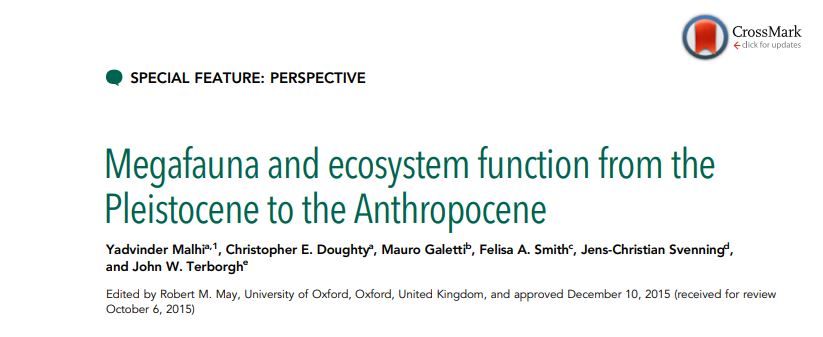
Today we're looking rewilding and animal-mediated seed dispersal in a paper that aims to identify areas and species in the Atlantic Forest to restore seed-dispersal interactions through rewilding
1/
#rewilding #rewildingscience
1/
#rewilding #rewildingscience

The authors start by explaining that as animal populations and species decline, the ecological interactions involving them are lost. Trophic rewilding his to restore these interactions through reintroductions or surrogate introductions
2/
2/
They say that certain types of animal interactions can be particularly beneficial, such as seed dispersal, which helps natural forest regeneration, creating more suitable habitat and a positive feedback loop
3/
3/
The authors use species distribution models, the ecological network approach and the credit of ecological interactions framework to identify priority areas of the Atlantic Forest and detect which species are the best candidates for rewilding
4/
4/
They quantify an interaction credit by looking at the number of animal-plant interactions expected to be restored if a species is reintroduced. They used data from data bases available from the Brazilian Atlantic Forest
5/
5/
The results showed that the spatial credit of ecological interactions ranged between 209 and 4814 interactions that could be cashed in prediction sites across the Atlantic Forest.
6/
6/

Areas with highest credit had high occurrence probabilities for plant species but low for frugivore species. Whereas areas with low credit either had high frugivore species richness or low plant species richness
7/
7/
They selected the 12 species with the highest regional scores in restoring seed-dispersal interactions in the Atlantic Forest to investigate more closely. 66% of the species with the highest regional scores are endemic to the Atlantic Forest
8/
8/

Sub-regions with the largest potential for cashing in the credit of ecological interactions had similar lists of the highest scoring species. The expectations are those species that are endemic to certain sub-regions
9/
9/
The authors say that their framework provides a useful tool ti identify rewilding candidates within a region or a given site. However, they explain that the decision on whether a species is a good candidate for trophic rewilding cannot be based solely on interaction patterns
10/
10/
The authors finish by explaining that being able to identify areas with the highest credit may help to maximise trophic rewilding benefits by highlighting areas that should be targeted.
11/11
11/11
• • •
Missing some Tweet in this thread? You can try to
force a refresh









